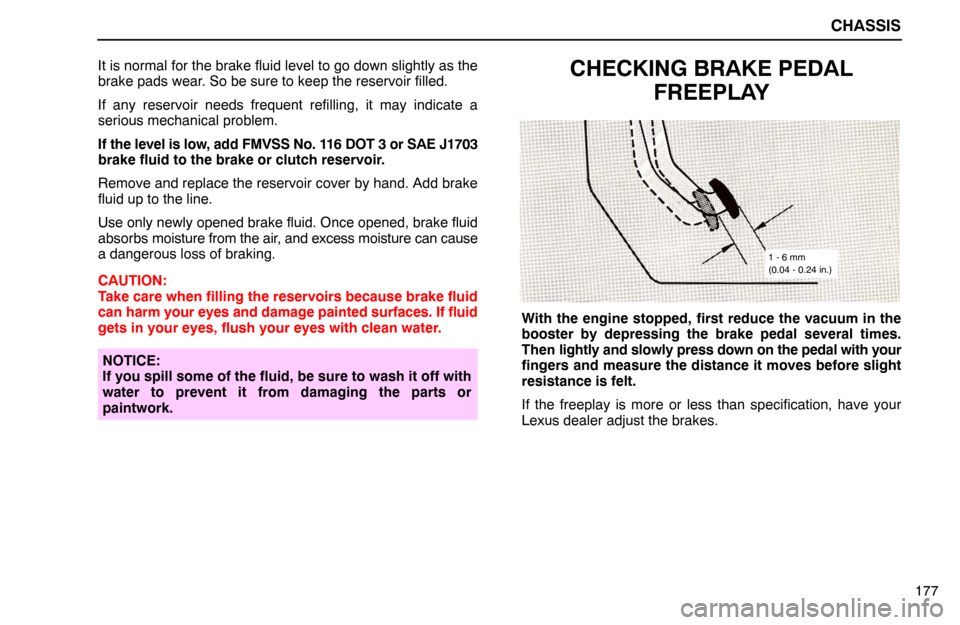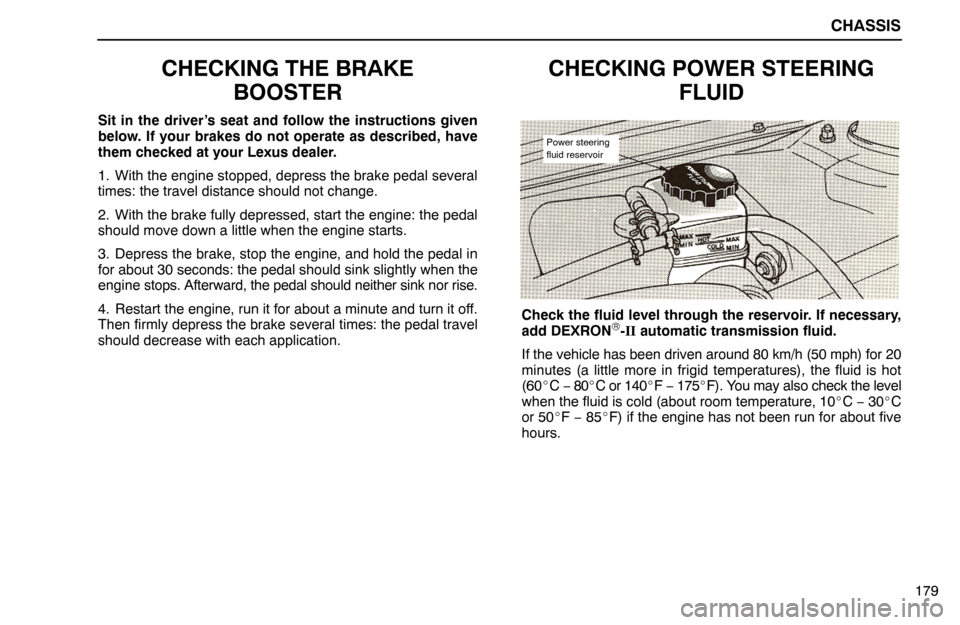CHASSIS
177 It is normal for the brake fluid level to go down slightly as the
brake pads wear. So be sure to keep the reservoir filled.
If any reservoir needs frequent refilling, it may indicate a
serious mechanical problem.
If the level is low, add FMVSS No. 116 DOT 3 or SAE J1703
brake fluid to the brake or clutch reservoir.
Remove and replace the reservoir cover by hand. Add brake
fluid up to the line.
Use only newly opened brake fluid. Once opened, brake fluid
absorbs moisture from the air, and excess moisture can cause
a dangerous loss of braking.
CAUTION:
Take care when filling the reservoirs because brake fluid
can harm your eyes and damage painted surfaces. If fluid
gets in your eyes, flush your eyes with clean water.
NOTICE:
If you spill some of the fluid, be sure to wash it off with
water to prevent it from damaging the parts or
paintwork.
CHECKING BRAKE PEDAL
FREEPLAY
1 - 6 mm
(0.04 - 0.24 in.)
With the engine stopped, first reduce the vacuum in the
booster by depressing the brake pedal several times.
Then lightly and slowly press down on the pedal with your
fingers and measure the distance it moves before slight
resistance is felt.
If the freeplay is more or less than specification, have your
Lexus dealer adjust the brakes.
CHASSIS
179
CHECKING THE BRAKE
BOOSTER
Sit in the driver’s seat and follow the instructions given
below. If your brakes do not operate as described, have
them checked at your Lexus dealer.
1. With the engine stopped, depress the brake pedal several
times: the travel distance should not change.
2. With the brake fully depressed, start the engine: the pedal
should move down a little when the engine starts.
3. Depress the brake, stop the engine, and hold the pedal in
for about 30 seconds: the pedal should sink slightly when the
engine stops. Afterward, the pedal should neither sink nor rise.
4. Restart the engine, run it for about a minute and turn it off.
Then firmly depress the brake several times: the pedal travel
should decrease with each application.
CHECKING POWER STEERING
FLUID
Power steering
fluid reservoir
Check the fluid level through the reservoir. If necessary,
add DEXRON®-II automatic transmission fluid.
If the vehicle has been driven around 80 km/h (50 mph) for 20
minutes (a little more in frigid temperatures), the fluid is hot
(60�C − 80�C or 140�F − 175�F). You may also check the level
when the fluid is cold (about room temperature, 10�C − 30�C
or 50�F − 85�F) if the engine has not been run for about five
hours.

